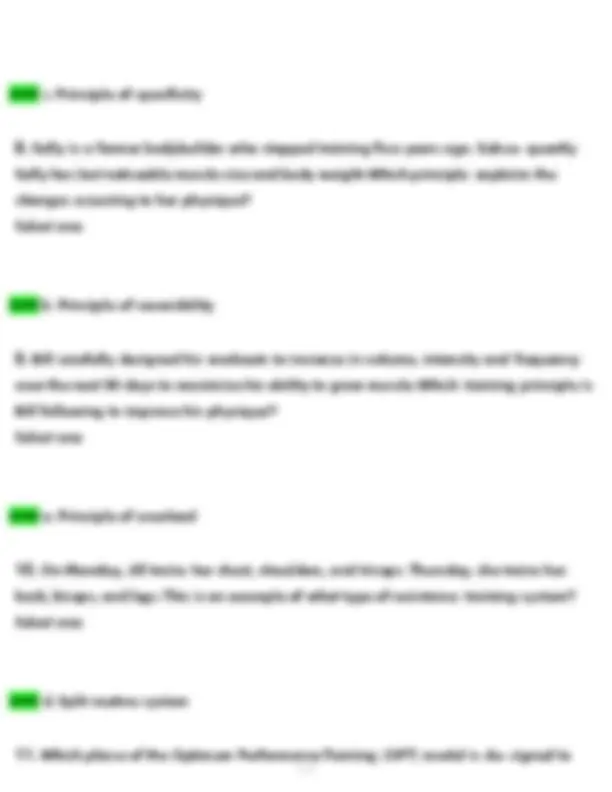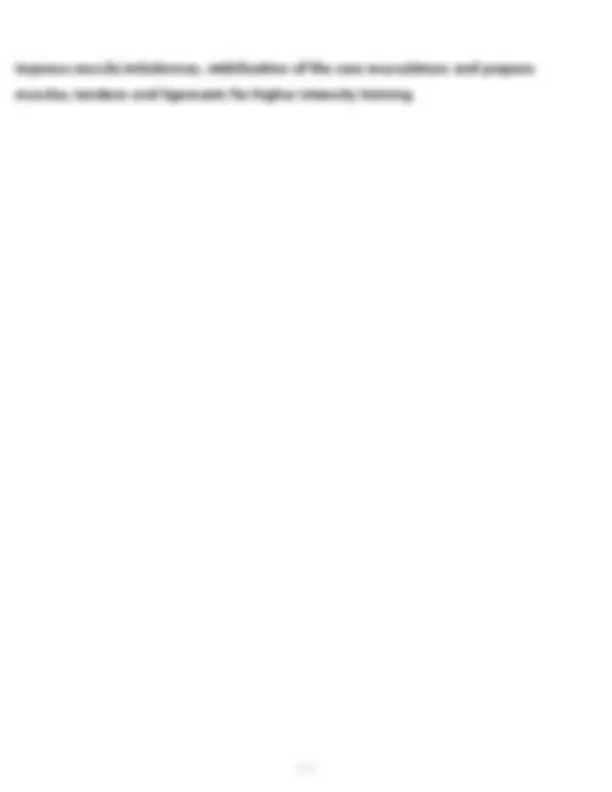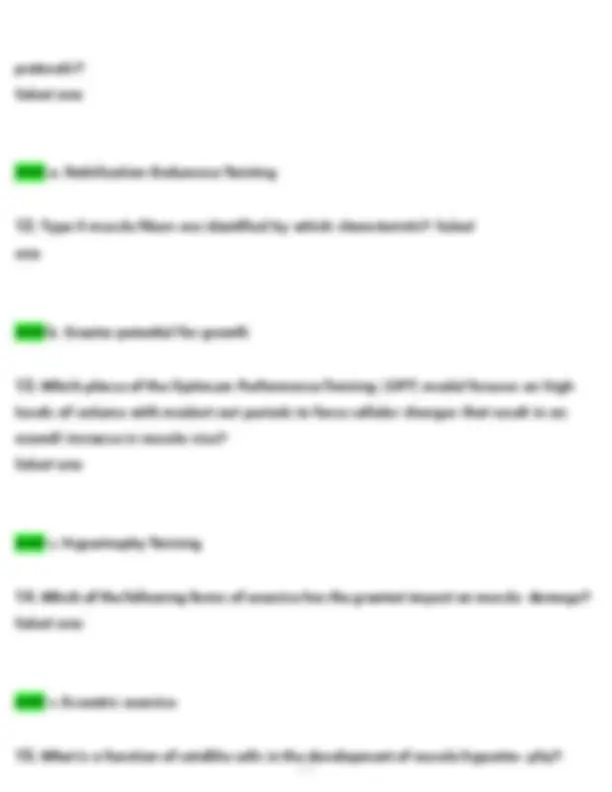





Study with the several resources on Docsity

Earn points by helping other students or get them with a premium plan


Prepare for your exams
Study with the several resources on Docsity

Earn points to download
Earn points by helping other students or get them with a premium plan
Community
Ask the community for help and clear up your study doubts
Discover the best universities in your country according to Docsity users
Free resources
Download our free guides on studying techniques, anxiety management strategies, and thesis advice from Docsity tutors
A set of multiple-choice questions and answers related to nasm bodybuilding exam. It covers various aspects of bodybuilding, including muscle hypertrophy, training principles, exercise techniques, and muscle fiber types. Useful for students preparing for the nasm bodybuilding exam or anyone interested in learning about bodybuilding.
Typology: Exams
1 / 7

This page cannot be seen from the preview
Don't miss anything!




1. What are the three mechanisms involved in exercise-induced muscle hyper- trophy? Select one ANS a. Mechanical tension, muscle damage and metabolic stress 2. Bodybuilders tend to demonstrate weakness of which muscle group? Select one ANS c. Rotator cuff 3. A bodybuilder has tight (overactive) chest, hip flexors and calves and weak (underactive) rotator cuff, rhomboids and gluteals. Which statement is correct? Select one ANS b. The bodybuilder should stretch his chest, hip flexors and calves
4. Which of the following training systems involves the completion of a num- ber of carefully-selected resistance exercises arranged sequentially, with a short recovery between the exercises (stations)? Select one ANS b. Circuit training 5. Which of the following statements is correct regarding the implementation of core training into a hypertrophy training program? Select one ANS b. Perform a low-volume of core exercises prior to resistance training 6. What muscles are intimately involved in the arm-curl exercise besides the biceps brachii to carry out the movement? Select one ANS a. Brachialis and brachioradialis 7. Ted begins a running regimen and subsequently over the next 30 days improves his cardiorespiratory endurance, but does not increase upper-body muscularity. His body's adaptation in this situation is best defined by which principle? Select one
improve muscle imbalances, stabilization of the core musculature and prepare muscles, tendons and ligaments for higher intensity training
protocols? Select one ANS a. Stabilization Endurance Training
12. Type II muscle fibers are identified by which characteristic? Select one ANS b. Greater potential for growth 13. Which phase of the Optimum Performance Training (OPT) model focuses on high levels of volume with modest rest periods to force cellular changes that result in an overall increase in muscle size? Select one ANS c. Hypertrophy Training 14. Which of the following forms of exercise has the greatest impact on muscle damage? Select one ANS c. Eccentric exercise 15. What is a function of satellite cells in the development of muscle hypertro- phy?
ANS d. "To prepare for my physique competition I will reduce my body fat by 5% in 12 weeks by exercising 60 - minutes five days per week and eating 500 less calories per day."
20. Which of the following statements describe the upper crossed syndrome? Select one ANS d. Forward head, thoracic kyphosis and protracted shoulders